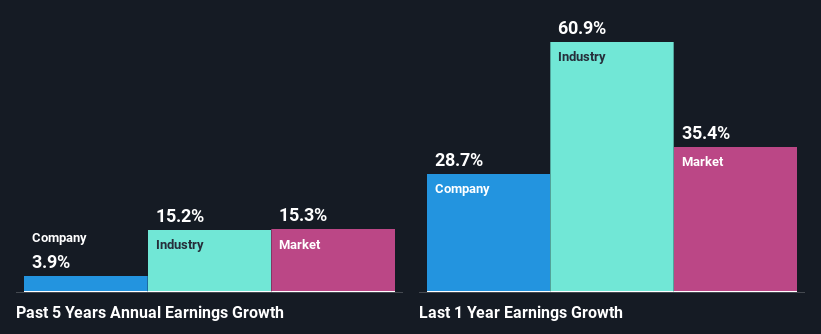Great-West Lifeco Inc.'s (TSE:GWO) Has Had A Decent Run On The Stock market: Are Fundamentals In The Driver's Seat?
Most readers would already know that Great-West Lifeco's (TSE:GWO) stock increased by 4.8% over the past three months. As most would know, long-term fundamentals have a strong correlation with market price movements, so we decided to look at the company's key financial indicators today to determine if they have any role to play in the recent price movement. In this article, we decided to focus on Great-West Lifeco's ROE.
Return on equity or ROE is an important factor to be considered by a shareholder because it tells them how effectively their capital is being reinvested. Put another way, it reveals the company's success at turning shareholder investments into profits.
Check out our latest analysis for Great-West Lifeco
How To Calculate Return On Equity?
Return on equity can be calculated by using the formula:
Return on Equity = Net Profit (from continuing operations) ÷ Shareholders' Equity
So, based on the above formula, the ROE for Great-West Lifeco is:
12% = CA$3.7b ÷ CA$30b (Based on the trailing twelve months to September 2021).
The 'return' is the yearly profit. So, this means that for every CA$1 of its shareholder's investments, the company generates a profit of CA$0.12.
What Has ROE Got To Do With Earnings Growth?
We have already established that ROE serves as an efficient profit-generating gauge for a company's future earnings. Based on how much of its profits the company chooses to reinvest or "retain", we are then able to evaluate a company's future ability to generate profits. Assuming everything else remains unchanged, the higher the ROE and profit retention, the higher the growth rate of a company compared to companies that don't necessarily bear these characteristics.
Great-West Lifeco's Earnings Growth And 12% ROE
To start with, Great-West Lifeco's ROE looks acceptable. And on comparing with the industry, we found that the the average industry ROE is similar at 13%. Great-West Lifeco's decent returns aren't reflected in Great-West Lifeco'smediocre five year net income growth average of 3.9%. A few likely reasons that could be keeping earnings growth low are - the company has a high payout ratio or the business has allocated capital poorly, for instance.
We then compared Great-West Lifeco's net income growth with the industry and found that the company's growth figure is lower than the average industry growth rate of 15% in the same period, which is a bit concerning.
The basis for attaching value to a company is, to a great extent, tied to its earnings growth. What investors need to determine next is if the expected earnings growth, or the lack of it, is already built into the share price. Doing so will help them establish if the stock's future looks promising or ominous. If you're wondering about Great-West Lifeco's's valuation, check out this gauge of its price-to-earnings ratio, as compared to its industry.
Is Great-West Lifeco Using Its Retained Earnings Effectively?
The high three-year median payout ratio of 57% (that is, the company retains only 43% of its income) over the past three years for Great-West Lifeco suggests that the company's earnings growth was lower as a result of paying out a majority of its earnings.
Additionally, Great-West Lifeco has paid dividends over a period of at least ten years, which means that the company's management is determined to pay dividends even if it means little to no earnings growth. Upon studying the latest analysts' consensus data, we found that the company is expected to keep paying out approximately 49% of its profits over the next three years. However, Great-West Lifeco's ROE is predicted to rise to 15% despite there being no anticipated change in its payout ratio.
Summary
On the whole, we do feel that Great-West Lifeco has some positive attributes. Although, we are disappointed to see a lack of growth in earnings even in spite of a high ROE. Bear in mind, the company reinvests a small portion of its profits, which means that investors aren't reaping the benefits of the high rate of return. Having said that, looking at the current analyst estimates, we found that the company's earnings are expected to gain momentum. To know more about the company's future earnings growth forecasts take a look at this free report on analyst forecasts for the company to find out more.
Have feedback on this article? Concerned about the content? Get in touch with us directly. Alternatively, email editorial-team (at) simplywallst.com.
This article by Simply Wall St is general in nature. We provide commentary based on historical data and analyst forecasts only using an unbiased methodology and our articles are not intended to be financial advice. It does not constitute a recommendation to buy or sell any stock, and does not take account of your objectives, or your financial situation. We aim to bring you long-term focused analysis driven by fundamental data. Note that our analysis may not factor in the latest price-sensitive company announcements or qualitative material. Simply Wall St has no position in any stocks mentioned.

 Yahoo Finance
Yahoo Finance 
